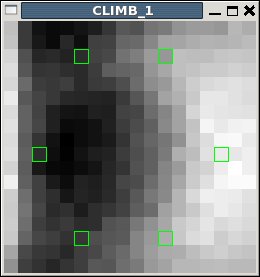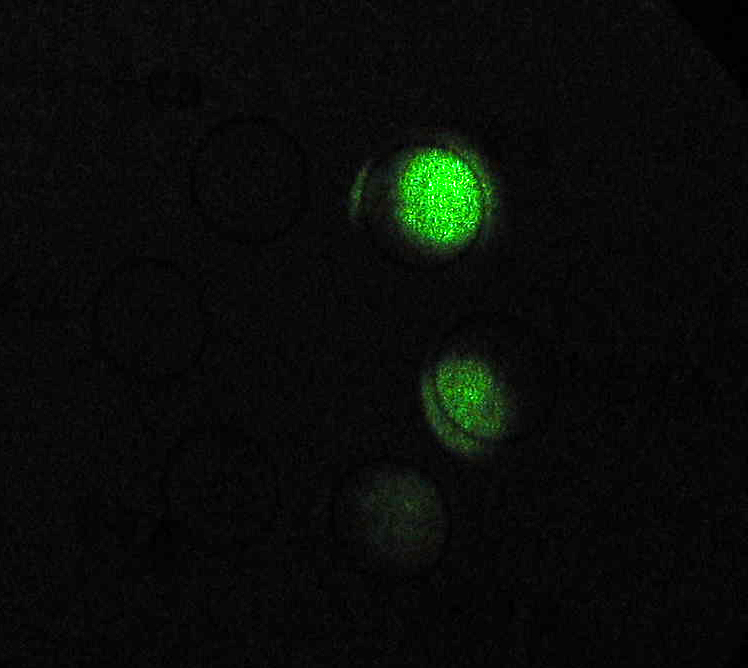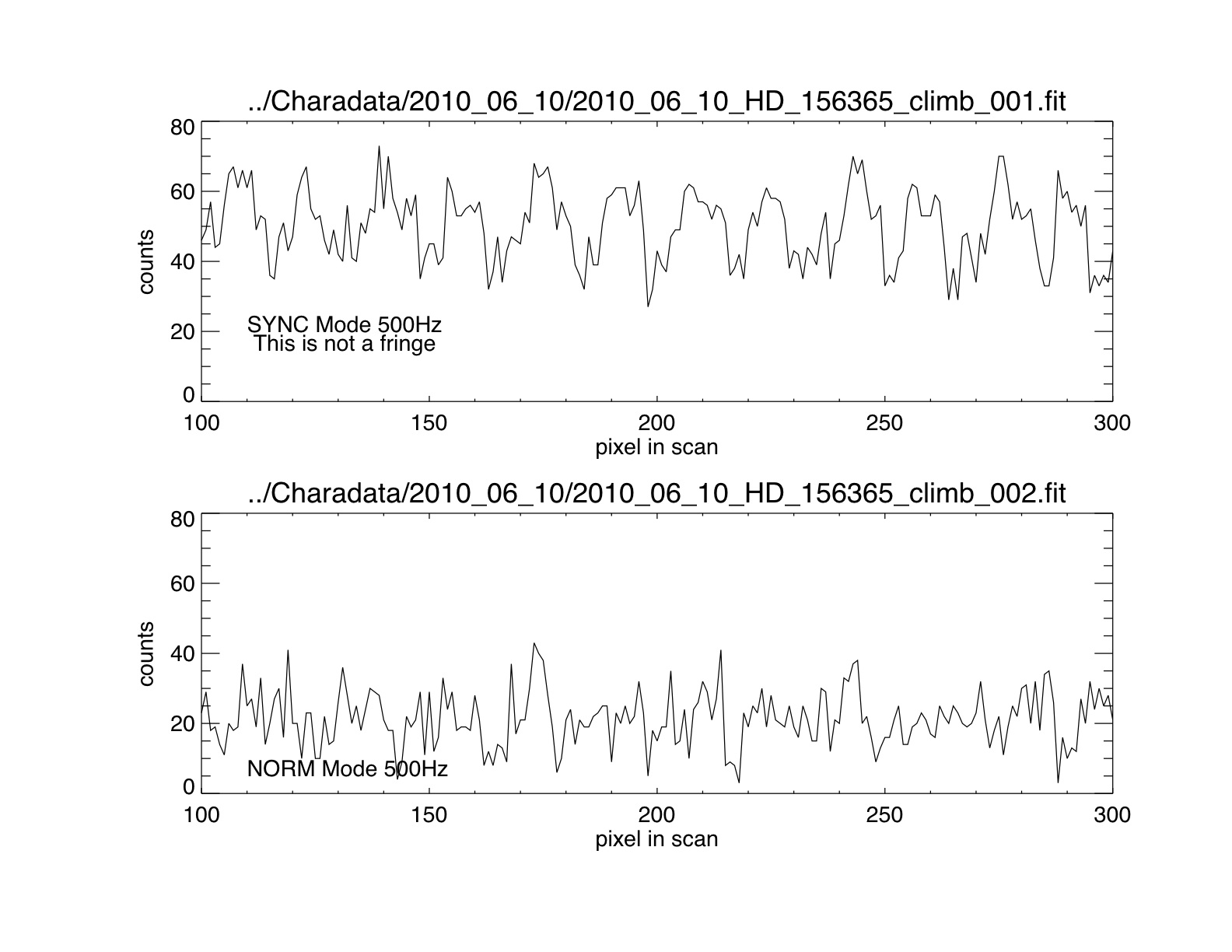CLIMB Noise Tests 2010JUN: Difference between revisions
No edit summary |
No edit summary |
||
| Line 1: | Line 1: | ||
| Line 24: | Line 23: | ||
[[Image: | [[Image:Climb_Beam3only.jpg]] | ||
Fig 1.i have included a picture of the beams on the NIRO Target -- this one is Beam 3 only. You can see some issues with the centering. | Fig 1.i have included a picture of the beams on the NIRO Target -- this one is Beam 3 only. You can see some issues with the centering. | ||
[[Image: | [[Image:Climb_background.jpg]] | ||
Fig 2. Here is also a picture of the last step of NIRO align which seems to show that the background on the camera chip is abit off-center [not sure if this normal]. This suggests that the climb pixels on the left are being somewhat vignetted getting into camera. | Fig 2. Here is also a picture of the last step of NIRO align which seems to show that the background on the camera chip is abit off-center [not sure if this normal]. This suggests that the climb pixels on the left are being somewhat vignetted getting into camera. | ||
| Line 52: | Line 51: | ||
I checked others files and there are strong sinusoids in most readout modes, but worst in the SYNC modes. One can see these strong spikes on the power spectrum window and our analysis confirms that these spikes are dominating the readnoise and should be addressed ASAP. Given that the sinusoids are not present at this strong level in NORM mode suggests that this spikes are caused by readout timing issues and not due to electrical interference. Rafael is quite keen to come up and help debug this and to experiment with some timing patterns. | I checked others files and there are strong sinusoids in most readout modes, but worst in the SYNC modes. One can see these strong spikes on the power spectrum window and our analysis confirms that these spikes are dominating the readnoise and should be addressed ASAP. Given that the sinusoids are not present at this strong level in NORM mode suggests that this spikes are caused by readout timing issues and not due to electrical interference. Rafael is quite keen to come up and help debug this and to experiment with some timing patterns. | ||
[[Image: | [[Image:camtest2010Jun.jpg]] | ||
Latest revision as of 20:03, 11 June 2010
Hi all. Here is a quick memo from John and Rafael.
We noticed that the camera performance as setup for CLIMB is significantly worse than for CLASSIC. I will summarize our findings briefly below. Unfortunately, the current conclusion is that CLIMB has 50% throughput (although I would wait to be sure of this until we get better seeing with CLIMB) and 3x the noise of CLASSIC (mostly caused by large amplitude sinewaves in the readout) -- However, we are confident this can be dramatically improved with some additional attention to alignment and the readout since CLASSIC uses the same camera optics and camera detector. Lots to do this summer!!
1. THROUGHPUT
We compared camera counts for the same star from 2009 June CLASSIC with 2010 June CLIMB and found 50% LESS LIGHT per TELESCOPE with CLIMB than CLASSIC. There appears to be some vignetting or some problem with the current alignment of CLIMB, as can be judged by the flux ratios on the pixels.
One can look at the flux distribution when closing shutters and only having light from a single beam at a time. Beam 1 should have 0% on pixel 1, 50% of pixel 2, 50% on pixel 3. We find : 0%, 40%, 60% Beam 2 should have 50% on pixel1, 25% on pixel2, 25% on pixel 3. We find: 65%, 18%, 17% Beam 3 should have 50% on pixel1, 25% on pixel2, 25%on pixel 3. We find 49%, 26%, 25% So it seems that beam 3 is great, but beam 1 and 2 are not perfect and could be improved.
We also compared the observed counts on camera with that expected for the given K magnitude. Assuming 4e-/DN, we find: For 2009Jun22,25 the total CLASSIC throughput was: 1.75 % For 2010Jun8,9,10 the total CLIMB throughput was 0.72 %. Note that seeing has been very poor for CLIMB and so this number might not be so bad if the seeing was better. We will have to await better seeing to confirm this.
Fig 1.i have included a picture of the beams on the NIRO Target -- this one is Beam 3 only. You can see some issues with the centering.
 Fig 2. Here is also a picture of the last step of NIRO align which seems to show that the background on the camera chip is abit off-center [not sure if this normal]. This suggests that the climb pixels on the left are being somewhat vignetted getting into camera.
Fig 2. Here is also a picture of the last step of NIRO align which seems to show that the background on the camera chip is abit off-center [not sure if this normal]. This suggests that the climb pixels on the left are being somewhat vignetted getting into camera.

reminder: climb spots are on the left.
2. Camera Noise
We compared Camera noise by looking at the STDEV of the counts during BACKGROUNDs. Here are typical numbers comparing CLASSIC readout in 2009 June with CLIMB 2010June
2009 June 2010 June CLASSIC CLIMB Noise (cts) Noise (cts) 500 Hz NORM 3.6 7.3 500 Hz SYNC 4.7 11.3
In addition to seeing that the noise in SYNC mode was higher than NORM mode, I was pretty shocked to see the 500Hz SYNC mode with 11.3 cts nosie rms -- this is like 40 e- noise (should be like 13 e-). I looked at the signal and there is a strong sinusoid and i show a zoom up of this figure here. For reference, this trace should look like white noise with an rms of ~4 Counts. This shows a sinusoid with half-amplitude of 10 cts with about 30 Hz frequency.
I checked others files and there are strong sinusoids in most readout modes, but worst in the SYNC modes. One can see these strong spikes on the power spectrum window and our analysis confirms that these spikes are dominating the readnoise and should be addressed ASAP. Given that the sinusoids are not present at this strong level in NORM mode suggests that this spikes are caused by readout timing issues and not due to electrical interference. Rafael is quite keen to come up and help debug this and to experiment with some timing patterns.

